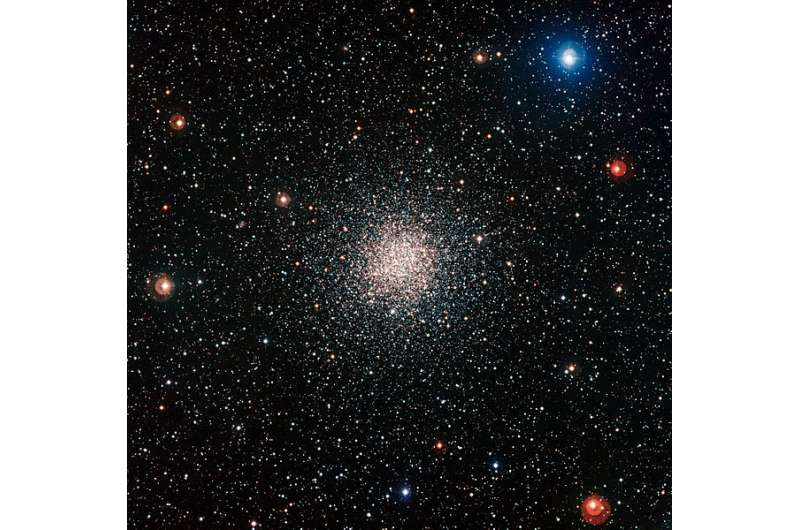March 6, 2017 weblog
Researchers investigate chemical composition of globular cluster NGC 6362

European astronomers have recently studied the chemical composition of the low-mass globular cluster designated NGC 6362. Their detailed analysis of chemical abundances for 17 elements in the cluster provides important insights into the nature of NGC 6362. The findings were presented March 1 in a paper published online on arXiv.org.
Located about 25,000 light years away in the constellation Ara, NGC 6362 is a an irregularly shaped globular cluster. With a mass of approximately 53,000 solar masses, it is one of the least massive globulars where multiple populations of stars have been detected. The cluster is about 13.5 billion years old.
Although NGC 6362 is well known to astronomers, its detailed chemical composition has not been studied so far. So a team of researchers led by Davide Massari of the Leiden Observatory in Netherlands investigated chemical abundances of this cluster. For their study, they used the FLAMES and UVES high-resolution spectrographs mounted on the Very Large Telescope (VLT) in Chile.
"We present the first detailed chemical study of NGC 6362, an intermediate metallicity cluster that belongs to the low-mass tail of the globular cluster mass distribution," the researchers wrote in the paper.
From spectra obtained by FLAMES and UVES, the scientists conducted a detailed chemical analysis of a sample of 11 red giant branch stars in NGC 6362. The scientists described chemical abundances for 17 elements present in this sample of stars and compared them with abundances taken from the literature for other globular clusters.
According to the paper, NGC 6362's iron (Fe) abundance is -1.07, which makes it a metal-intermediate cluster. The researchers found that although NGC 6362 stars appear to be quite rich in both magnesium (Mg) and aluminum (Al), their Mg and Al abundances are still in agreement with the trends observed for field stars. They also noted that when it comes to silicon (Si), calcium (Ca), and titanium (Ti) content, NGC 6362 does not differ significantly from other globular clusters.
The researchers also measured abundances of scandium (Sc), vanadium (V), manganese (Mn), chromium (Cr), cobalt (Co), nickel (Ni),copper (Cu), barium (Ba), lanthanum (La), neodymium (Nd) and europium (Eu).
The researchers compared the results with M 4, a globular cluster with similar mass and metallicity. This comparison shows that these two clusters share the same chemical composition, which indicates that NGC 6362 is a regular cluster, formed from gas that has experienced the same chemical enrichment of other clusters with similar metallicity.
"Summing all up, the differential comparison between NGC 6362 and M 4 revealed that all the elemental abundances measured for the two clusters match within 1-σ (with the marginal exception of [Ba/Fe]). (...) Therefore, we conclude that NGC 6362 is a regular globular cluster that shows the chemical composition representative of the Milky Way globular clusters with similar mass and metallicity, with the signatures of chemical enrichment by core-collapse supernovae and asymptotic giant branch stars," the paper reads.
More information: "The chemical composition of the low-mass Galactic globular cluster NGC 6362" arxiv.org/pdf/1703.00385.pdf
© 2017 Phys.org





















